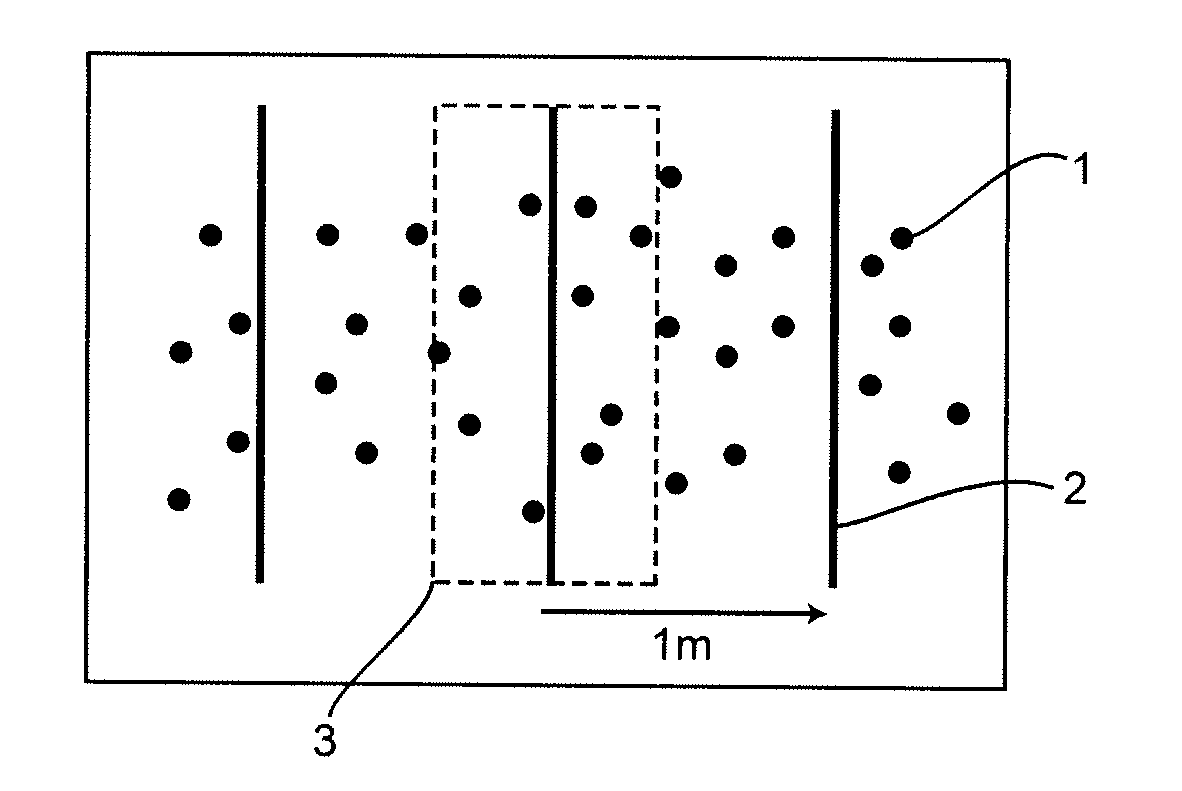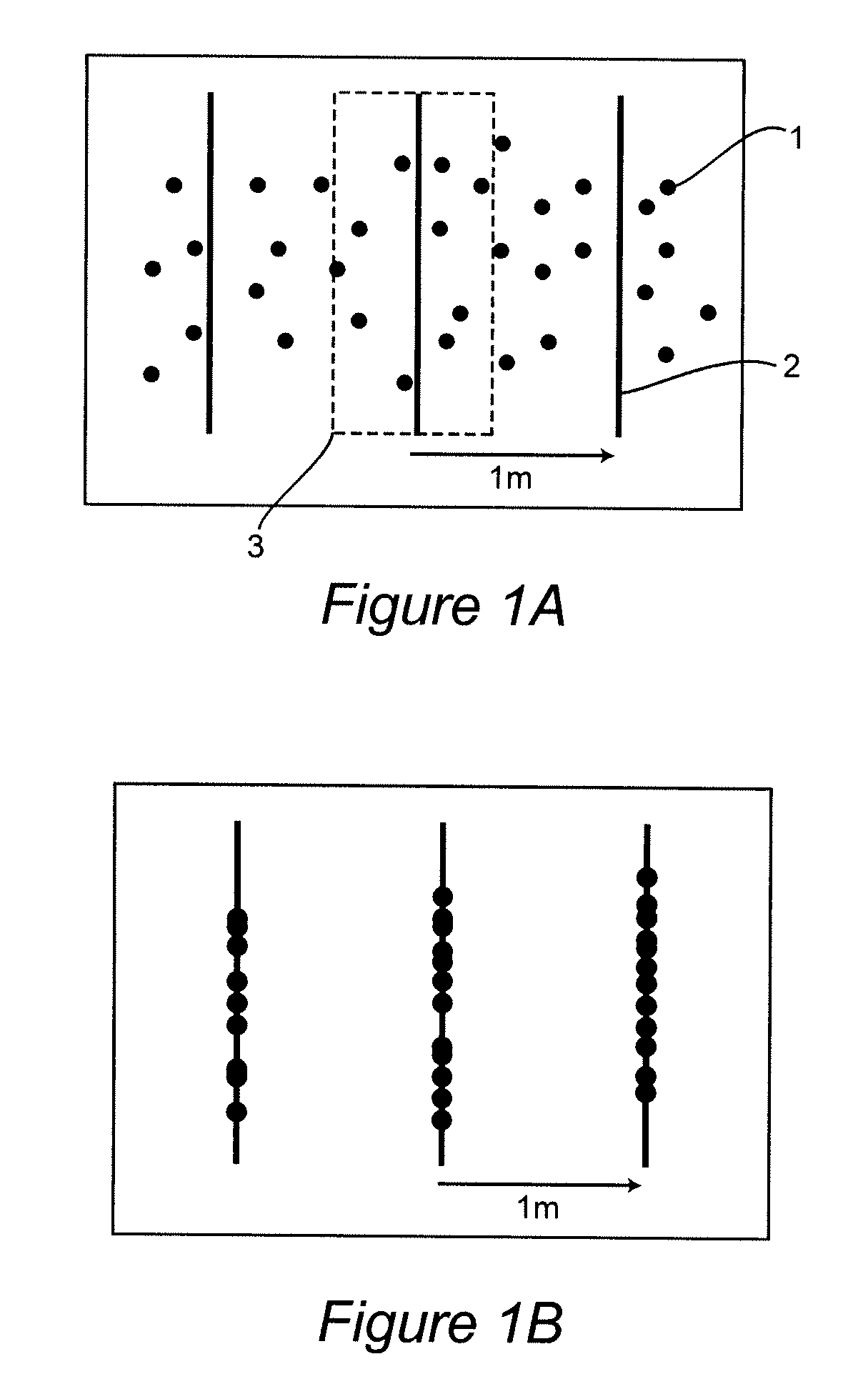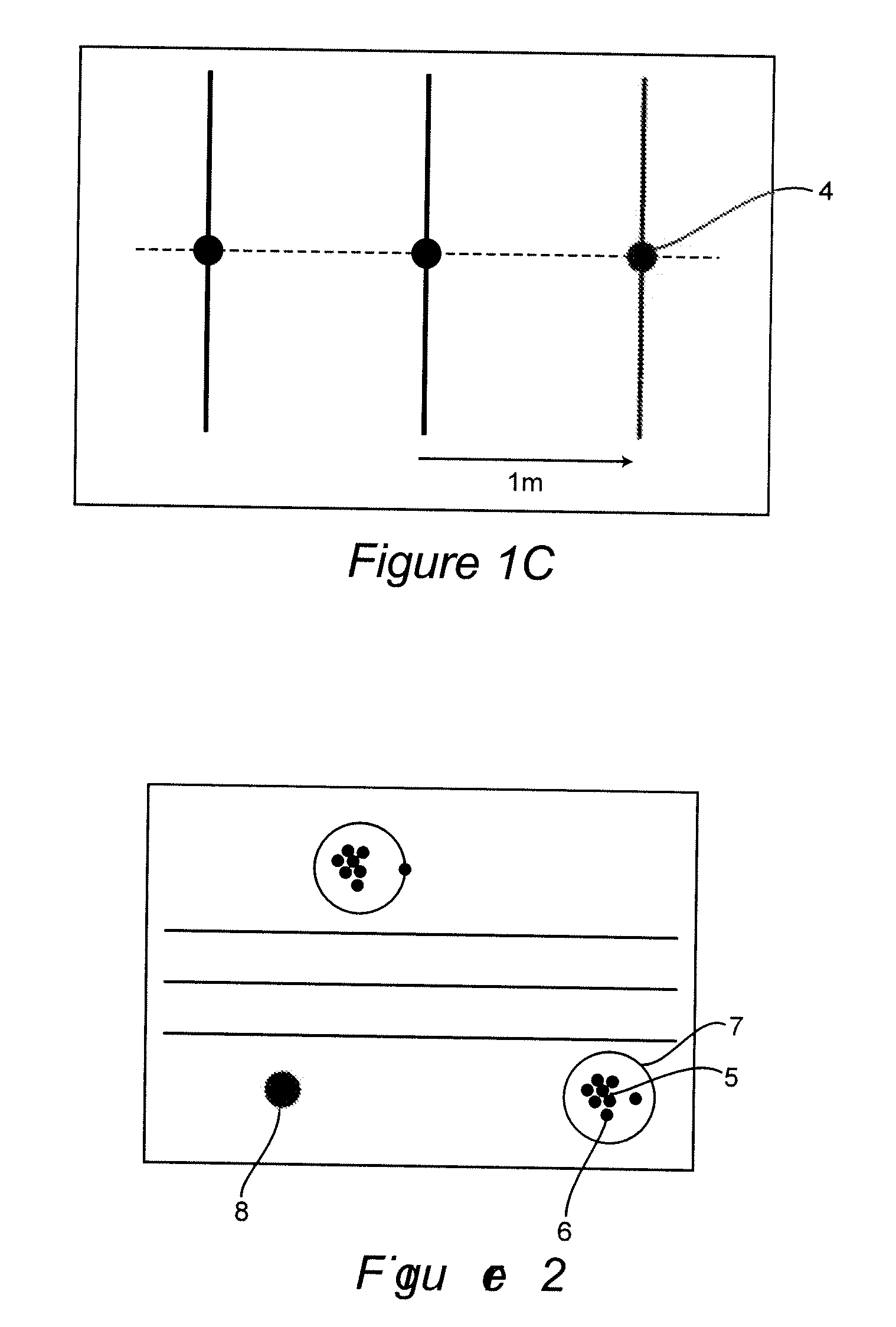Method for determining a highly accurate position of routes and/or objects
a highly accurate and route-oriented technology, applied in vehicle position/course/altitude control, process and machine control, instruments, etc., can solve the problems of inability to increase the accuracy, inaccuracy of digital rail maps, and inapplicability of digital maps created in this manner
- Summary
- Abstract
- Description
- Claims
- Application Information
AI Technical Summary
Benefits of technology
Problems solved by technology
Method used
Image
Examples
Embodiment Construction
[0027]FIG. 1a diagrammatically shows a plurality of measured values 1 which were determined when surveying a route. In this case, a plurality of surveying operations were carried out and the measured values recorded in the individual surveying operations were then superimposed, as illustrated in FIG. 1a. Corresponding planes 2 which are defined perpendicular to the course of the route were then placed in these measured values which were superimposed in this manner. These planes 2 can be placed in the measured value series at a distance of one meter, for example, as illustrated in the exemplary embodiment of FIG. 1a.
[0028]Each of these planes 2 forms a region 3 around itself. The measured values in this region 3 are then projected onto the corresponding plane, as shown in FIG. 1b. In this exemplary embodiment, this means that the measured values are horizontally shifted onto the corresponding planes in the direction of the route. After this step, bundling of the measured values on t...
PUM
 Login to View More
Login to View More Abstract
Description
Claims
Application Information
 Login to View More
Login to View More - R&D
- Intellectual Property
- Life Sciences
- Materials
- Tech Scout
- Unparalleled Data Quality
- Higher Quality Content
- 60% Fewer Hallucinations
Browse by: Latest US Patents, China's latest patents, Technical Efficacy Thesaurus, Application Domain, Technology Topic, Popular Technical Reports.
© 2025 PatSnap. All rights reserved.Legal|Privacy policy|Modern Slavery Act Transparency Statement|Sitemap|About US| Contact US: help@patsnap.com



